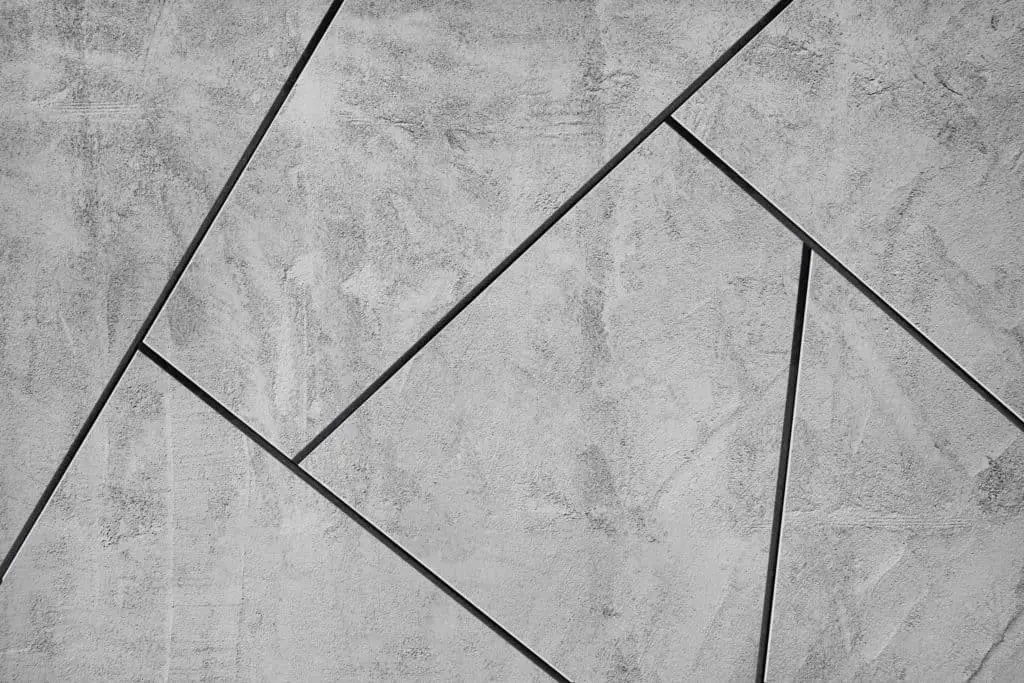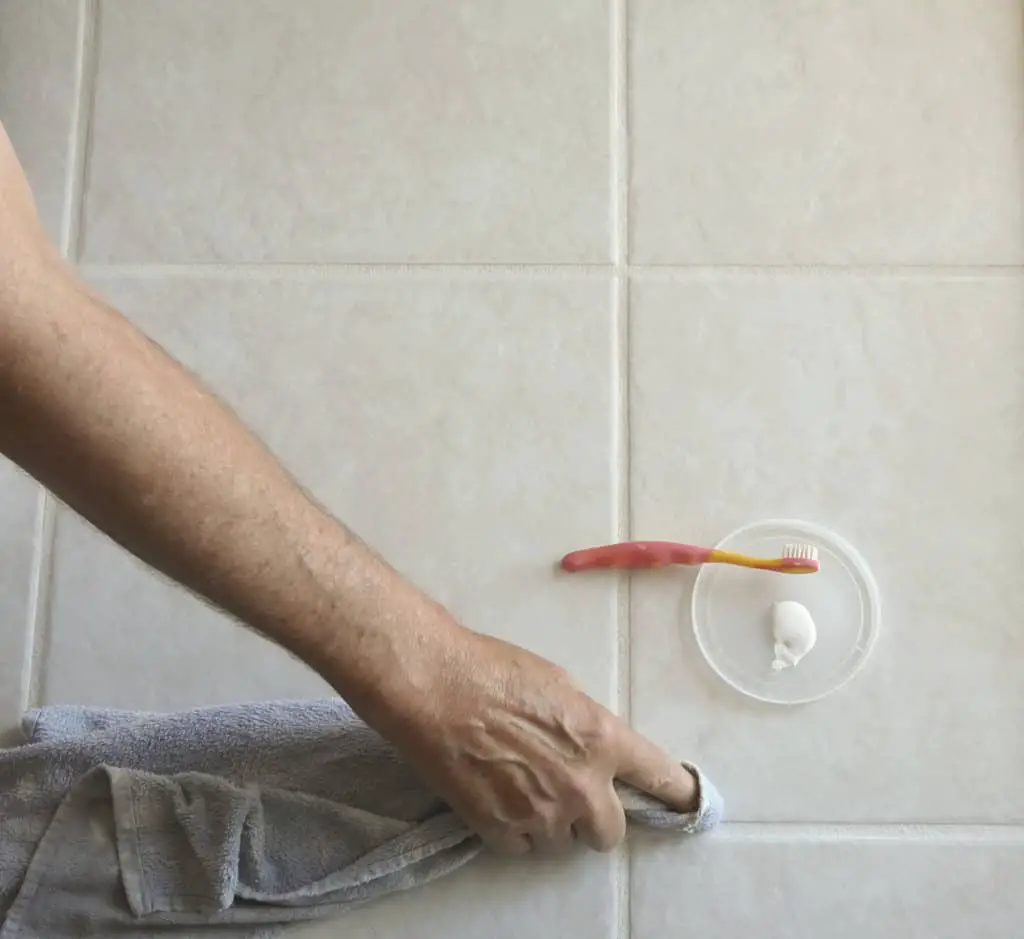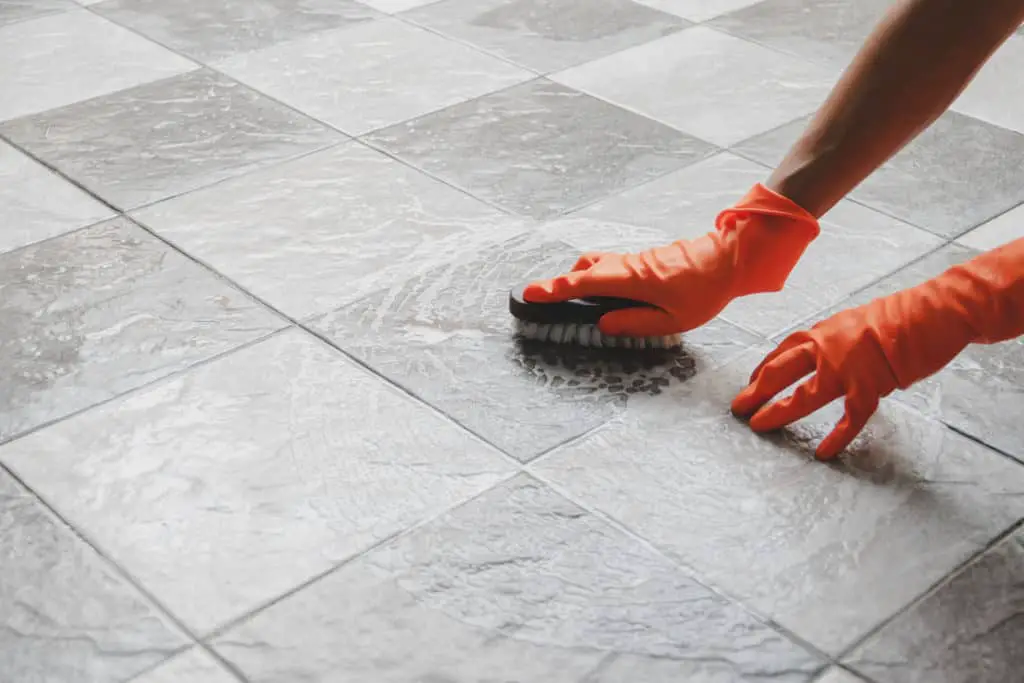
Grout and tile sealer are essential to have when you are laying down a brand new floor. The sealer will help to prevent future damage that could be done to the floor. With these two sealers being used in essentially the same area, one can only wonder what the difference could be between the two.
There is no difference between tile and grout sealers in functionality, but they are typically applied to different surfaces, making the drying process differ between the two. The sealers are sometimes used at different times in the tiling process, but neither are used exclusively for one purpose.
With this being said, let’s go through the purpose of these sealers, the sealing process, and the benefits of the sealers.
Purpose Of Grout Sealer

Sealing the grout will have a significant effect on the quality and longevity of your tile. Damage will not be done to the floor under the tile, to the backside of the tile, and your grout will last longer. Here are other specific ways of how sealing your grout will help you in the long run.
Water/Bacteria Resistant
Sealing your grout will help your grout repel water and be bacteria resistant. When the grout is not sealed, the water will be absorbed into the grout, causing bacteria to form. From there the bacteria will be turned into a type of mold over time.
When mold is present under your tile, it often takes a while before the homeowners become aware of it. This allows for the mold to grow to a point where the only option is to completely replace the tiles, and it can be damaging as well.
Preserve The Look Of The Tile
Keeping things nice and clean helps us feel good about what we’ve either purchased or created. You want to make sure that you are taking care of whatever it is. Whether it be new clothes or something that you made for someone, we naturally want it to look good.
With sealing the grout, you’ll be able to keep it looking how it did when you first laid it down. When you don’t seal the grout, the grout will start to discolor and will peel away the longer you don’t have it sealed.
Prevents Mold
No one likes mold. It will destroy not only your health but also the value of your home. Mold can significantly decrease the value of a home, and would likely play a large factor if you were to ever want to sell your home. So, the safe bet is to seal your grout to make sure that, molding doesn’t occur in your home.
One Exception
There is only one type of grout that doesn’t need a sealant, and that is an epoxy-based grout. This one is uncommon because it is used with glass tiles and very expensive. But, if you try to apply the grout sealer onto this epoxy-based grout, the grout will actually reject the application of the sealant.
This is okay though, because of the materials that the epoxy-based grout is made of. It is more of a plastic material which makes it more resistant to stains and water damage. This grout though isn’t meant for all types of tile, so make sure that you are applying the right grout for the type of tile that you have.
Purpose Of Tile Sealer

When you seal the tile, like sealing grout, it helps you so much in the long run. It will help your tile be able to last just as long as your grout will last.
Protection
Sealing your tile will help protect your tile. It will help it to be germ and water-resistant, helping to preserve the integrity of the tile. It is comforting knowing that you’ll be able to take a shower or have an area in your home that will be protected from forming bacteria on its surface and keep you and your family safe from the bacteria that could form if you don’t seal the tile.
Applying a tile sealer will protect the tiles from oxidation, deterioration, and day-to-day wear and tear. Which in turn increases the durability of the tile and prevents stains. It will also keep your tile from chipping away from everyday use.
Reduces Porisity
Every kind of tile has porosity to it. No matter what, it will be able to absorb the water and collect bacteria over time. This makes applying tile sealer very important for the state of your tile. With the sealer applied, your tile won’t be able to absorb the water and thus will keep it from collecting that harmful bacteria.
Preserve The Look Of The Tile
With the sealer applied, your tile will be looking really good! When the sealer is not applied, the tile will easily be able to be stained and damaged from day-to-day use. When the tile gets stained, like clothes, you start to not like it and soon want to have new tile. Not sealing your tile can be very expensive.
This makes sealing the tile essential in the installation process. It will save you some money in the long run and help you to feel proud of the work that you did.
The Sealing Process For Grout

In order the have the grout sealed properly, you will need to go through a long yet simple process. You will need the grout sealant, tape, a foam paintbrush, a small container, a towel that is the same color as the grout, and water.
- Let the grout cure before sealing. You should allow the grout to cure for anywhere from 48-72 hours. After you do this, make sure that there aren’t any cracks or anything that may compromise the sealant.
- Tape off surrounding baseboards and other surfaces. This will help other surfaces from being unintentionally stained or damaged from the sealant.
- Apply the sealer using a foam paintbrush. To make sure that the sealant is easy to access, pour the sealant into a small container that will be easy for the foam paintbrush to be dipped into the sealant. You will then apply the sealant to the grout lines, making sure that you cover the grout completely.
- Wait for the first coat to soak into the grout. This will be for about 5-15 minutes. Then the second coat will be ready to be applied.
- Start wiping off sealer with a rag after 5 minutes. As you are waiting for the sealant to soak into the grout, get a rag that is the same color as your grout and clean up any mess that might’ve occurred.
- Allow the grout sealer to cure. Keep away anything that might stain the grout for about 72 hours, but usually, a complete cure of the sealant will be achieved within 24-48 hours.
- Test the grout sealant. You will do this by getting some water and dripping a few drops onto the grout lines. If the water pools or puddles up, then the sealant worked. Make sure to do this at multiple locations of the surface area that the sealed.
The Sealing Process For Tile

With sealing tile, attention to detail is essential. Here is a list of essential steps in the sealing process for tile.
- Check to see if your tile is porous. You can do this by getting a wet sponge, placing it on the tile, and removing it after a minute. If there is a dark spot where you placed the sponge, you will need to seal your tile, but if there are little droplets on the surface of the tile, it doesn’t need to be resealed.
- Pick the correct sealant. Depending on what type of tile you have, will determine what kind of sealant you will get.
- Clean the surface area that you will be sealing. First, vacuum the tile to get all dust, debris, and dirt off of the tile. Second, get a gallon of warm water with soap and mop the tile. Third, take a toothbrush and scrub what stains that could be in the grout. Finally, you will then rinse the floor that you just cleaned with water and let it dry for about 6 hours.
- You will then fill a spray bottle with the tile sealer. Make sure you do so carefully so that no spills occur.
- Hold the spray bottle about 6 inches away from the tile. Make sure that it is a thin layer that is sprayed on the tile and is spread out evenly.
- Let the sealer sit for about 5 minutes. This will allow the sealer to be absorbed into the tile.
- Wipe over the tile with a damp cellulose sponge to remove the excess sealer. Make sure to wipe and not scrub the tile. Scrubbing the tile could damage the seal.
Different Areas, Same Product
Tile and grout sealer are very important to use when installing tile in your home. They have their separate purposes but are the same product.
Making sure that you seal your tile and grout will prevent damage in the future. You need to keep an eye on the state of your grout and tile. Do this by checking every year if the sealant is working with the water drop test for the grout and the sponge test for the tile. Do this and your tile and grout will last for a long time.
